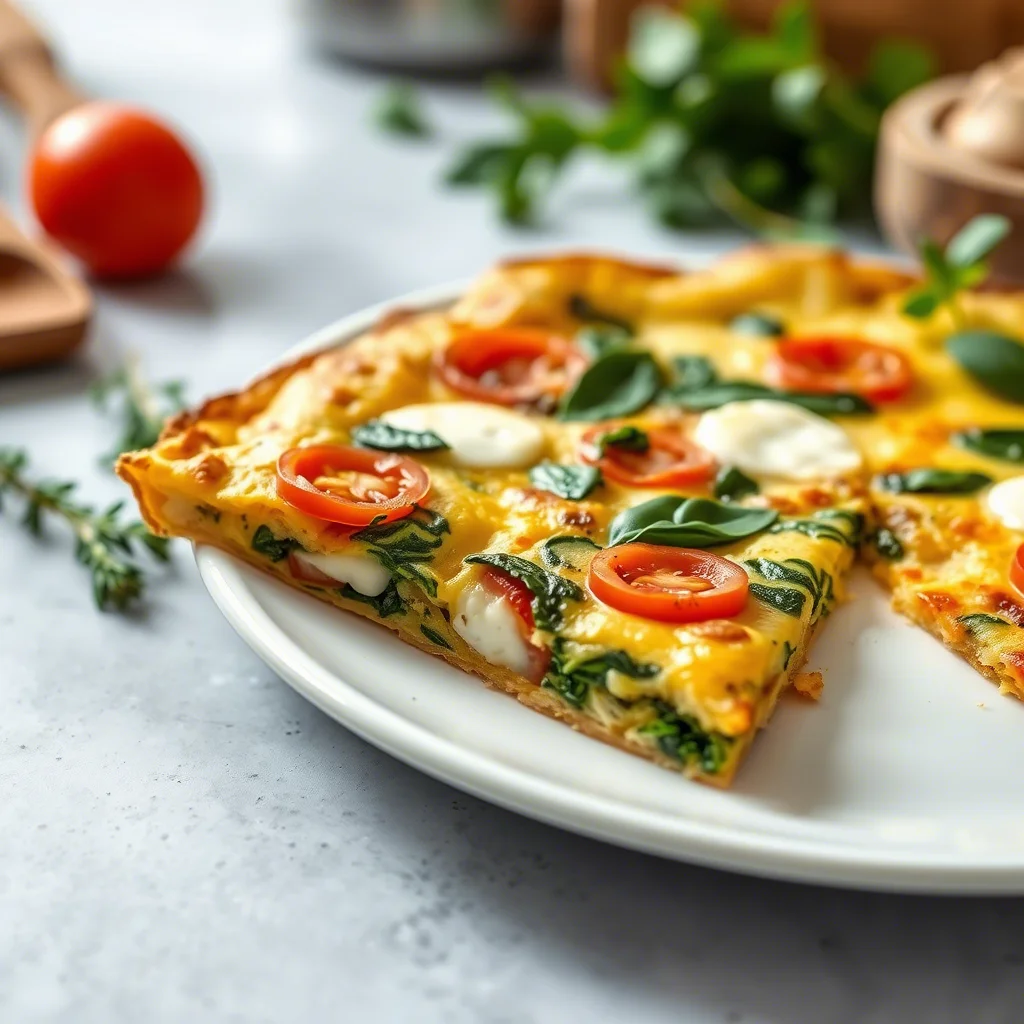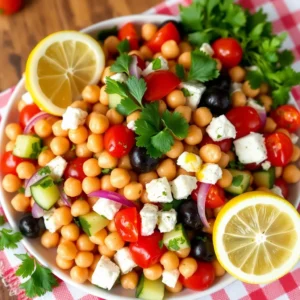Hello there, fellow food lovers! Alexandre here from FoodyTasty. Today, I’m absolutely thrilled to share one of my all-time favorite breakfast recipes that has saved my mornings more times than I can count. If you’re juggling a busy schedule (and who isn’t these days?), this Italian frittata recipe might just become your new best friend in the kitchen.
Why You’ll Love This Frittata
There’s something magical about a dish that can be breakfast, lunch, or dinner with equal grace. The frittata—this wonderful Italian egg creation—is precisely that kind of culinary chameleon. What makes it even better is how it welcomes whatever ingredients you happen to have lingering in your refrigerator.
As a parent who often finds myself staring into the fridge at 5:30 pm wondering what on earth to make for dinner, I’ve come to appreciate the frittata’s forgiving nature. Those slightly wilted spinach leaves? Perfect. The quarter of an onion left from yesterday’s pasta sauce? Throw it in! That last bit of cheese that’s not quite enough for a sandwich? It’ll find a happy home in your frittata.
But what truly makes the frittata special isn’t just its adaptability—it’s how it transforms these humble ingredients into something that feels intentional and cohesive, like you planned it all along. And who doesn’t love feeling like they’ve got their life together, especially at 7 am on a Monday?
The Beautiful History Behind the Italian Egg Dish
Before we dive into spatulas and skillets, let’s take a moment to appreciate where this delightful dish comes from. The frittata has been gracing Italian tables for generations, its name derived from “friggere,” meaning “to fry” in Italian. Unlike its French cousin, the omelet, which is typically folded over fillings, the frittata proudly displays its ingredients throughout its entire thickness.
Traditional Italian families have long relied on this dish as a practical way to use leftover vegetables and meats, creating nourishing meals that waste nothing. I love imagining Italian grandmothers (“nonnas”) throughout history, standing over their cast iron pans, creating these egg masterpieces from whatever their gardens and pantries offered that day.
Today, the frittata has found its way into American kitchens, where we’ve embraced its practical charm and endless possibilities. From fancy brunch menus to humble weeknight dinners, this versatile egg dish continues to nourish and delight.
Ingredients You’ll Need for a Perfect Frittata
One of the many reasons I adore making frittatas is their flexibility, but here’s a solid foundation to start with:
- 6 large eggs: The star of our show! Fresh, high-quality eggs make all the difference.
- 1/2 cup milk or dairy-free alternative: This brings creaminess and helps achieve that perfect texture. I’ve used everything from whole milk to oat milk with great results.
- 1 cup shredded cheese: Choose something that melts beautifully. Cheddar, mozzarella, or gruyere are fantastic options. For a Mediterranean twist, crumbled feta works wonders too!
- 1 small onion, finely chopped: The aromatic foundation that builds layers of flavor.
- 1 bell pepper, diced: Adds a sweet crunch and gorgeous color. Red, yellow, or orange peppers are my favorites for their vibrant hue.
- 1/2 cup spinach, chopped: Sneaking in those greens! Kale or Swiss chard also work wonderfully here.
- 1/2 cup cooked protein (optional): Leftover rotisserie chicken, cooked sausage, or ham make excellent additions.
- 1/2 tsp garlic powder: For that subtle depth of flavor.
- Salt and pepper, to taste: Essential seasonings that bring everything together.
- 1 tbsp olive oil: For sautéing and preventing sticking.
- Fresh herbs for garnish: Parsley, basil, or chives add a bright finishing touch.
What’s wonderful about a frittata is that this ingredient list is more of a gentle suggestion than a strict rule. Your frittata can be as simple or as elaborate as you like, depending on what you have available and how much time you can spare.
Step-by-Step Frittata Instructions
Let’s break down this process into simple steps that make creating a perfect frittata completely approachable, even on your busiest mornings:
- Preheat your oven to 375°F (190°C). This ensures your frittata finishes cooking with a beautiful golden top.
- Prepare your skillet. Grab an oven-safe skillet (a 10-inch cast iron is perfect, but any oven-safe pan will do) and warm it over medium heat with a tablespoon of olive oil.
- Sauté the aromatics. Add your chopped onion and cook until it becomes translucent and fragrant, about 2-3 minutes. This is where the magic begins—that wonderful aroma filling your kitchen is just the first hint of the deliciousness to come.
- Add the colorful vegetables. Toss in your diced bell pepper and continue cooking for another 2 minutes. Now add the spinach and watch it wilt down into the mixture, which takes just a minute or two.
- Prepare the egg mixture. While your vegetables are softening, crack your eggs into a large bowl and whisk them until they’re light and frothy. Pour in the milk, add the garlic powder, season with salt and pepper, and give it another good whisk.
- Incorporate the cheese. Fold about three-quarters of your shredded cheese into the egg mixture, saving the rest for topping. This ensures you get both melted cheese throughout and that irresistible cheesy top.
- Combine everything in the skillet. Pour your egg mixture over the sautéed vegetables, giving everything a gentle stir to ensure even distribution. If you’re adding any pre-cooked protein, now’s the time to scatter it throughout.
- Start the cooking process on the stovetop. Let the frittata cook undisturbed for about 3-4 minutes until the edges begin to set. You’ll notice the outside starting to firm up while the center remains quite liquid.
- Transfer to the oven. This is where the two-stage cooking method works its magic. Place your skillet in the preheated oven and bake for 10-15 minutes, until the center is set and the top becomes golden and slightly puffed.
- Rest before serving. Once your frittata is done, let it rest for about 5 minutes. This slight cooling period makes it easier to slice and allows the flavors to settle in.
- Garnish and serve. Sprinkle the remaining cheese on top while the frittata is still warm, add your fresh herbs, slice into wedges, and serve!
The wonderful thing about this method is that it gives you a frittata with a perfect texture—set throughout but never rubbery, with a beautiful golden finish on top that you just can’t achieve on the stovetop alone.
Time-Saving Breakfast Recipe Tips
One of my favorite things about making a frittata is that it can be a “make now, eat later” kind of meal. If your mornings are particularly hectic (and whose aren’t?), consider baking your frittata the night before. It reheats beautifully in the microwave for about 30 seconds per slice, or you can enjoy it at room temperature for a grab-and-go breakfast that beats anything from the drive-thru.
For even more time efficiency, prep your vegetables in advance. I often chop onions, peppers, and other veggies on Sunday evenings, storing them in containers in the fridge. This simple step can save precious minutes on busy weekday mornings.
Creating a Frittata Meal Prep Routine
If you’re serious about streamlining your morning routine, consider incorporating frittata into your weekly meal prep. A single frittata can provide several servings, making it an efficient way to ensure you have a protein-packed breakfast ready to go for those mornings when every minute counts.
To meal prep your frittata:
- Cook according to the instructions above
- Allow to cool completely
- Slice into individual portions
- Store in airtight containers in the refrigerator for up to 3 days
For longer storage, you can freeze individual slices! Wrap each piece in parchment paper, then place in a freezer-safe container. When you’re ready to enjoy, thaw overnight in the refrigerator and reheat gently in the microwave or oven.
My Secret Tips for the Perfect Frittata Every Time
After years of making frittatas for my family (and occasionally rescuing them from near-disasters), I’ve collected a few tricks that make all the difference between a good frittata and a great one.
First, don’t overbeat your eggs. A gentle whisking until just combined keeps your frittata light and fluffy. Beat them too much, and you’ll incorporate too much air, which can make your frittata puff up dramatically in the oven, only to collapse into a dense disk when cooling. Aim for frothy, not foamy!
When it comes to vegetables, remember that they release moisture as they cook. If you’re using particularly watery vegetables like zucchini or mushrooms, consider pre-cooking them separately to release some of that moisture before adding them to your frittata. Nothing ruins texture quite like a soggy bottom! (And yes, I learned this the hard way after serving what my daughter now lovingly refers to as “the frittata soup incident of 2020.”)
Temperature matters too. If your pan is too hot when you add the eggs, you’ll end up with a rubbery exterior and possibly a raw center. Medium heat is your friend here—it gives the eggs time to set gradually from the edges toward the center before going into the oven.
And here’s something that took me years to accept: patience is truly a virtue when it comes to frittatas. Let it rest for those few minutes after taking it out of the oven. I know it smells amazing and everyone’s hungry, but that resting time allows the eggs to finish cooking gently and makes slicing much easier. Trust me, your Instagram-worthy wedges will thank you.
When My Frittata Saved Dinner (A Kitchen Confession)
There was this Thursday evening last winter—you know the kind—when I’d completely forgotten about the parent-teacher conference that ran late, my son had soccer practice, and somehow dinner needed to materialize out of thin air. The refrigerator held a sad assortment of odds and ends: half an onion, a slightly wrinkled bell pepper, two eggs short of a dozen, and a questionable amount of cheddar cheese.
As everyone dumped their backpacks and cleats by the door, the “what’s for dinner?” question hung in the air. That’s when the humble frittata came to my rescue. Twenty-five minutes later, we were sitting down to a meal that looked and tasted intentional, with a side salad quickly assembled while the frittata baked.
My daughter, who typically views eggs with suspicion, actually asked for seconds. When my husband later mentioned that it was “even better than the planned dinners,” I decided not to tell him that the entire meal was born of desperation and a nearly empty fridge. Some kitchen secrets are worth keeping!
This versatile dish has saved countless dinners in our home, transforming what could have been a takeout night into a satisfying homemade meal that brings us all around the table.
Frequently Asked Questions About Frittatas
Can I make a frittata without an oven-safe skillet?
Absolutely! While the traditional method calls for starting on the stovetop and finishing in the oven, you can adapt based on what you have. If your skillet isn’t oven-safe, cook the frittata on low heat on the stovetop until almost set, then either carefully flip it to finish cooking the top (like a giant pancake), or cover it with a lid to help the top set with the trapped steam. The texture will be slightly different, but still delicious. Alternatively, you can transfer your vegetable mixture to a greased baking dish, pour the egg mixture over, and bake it entirely in the oven at 350°F for about 20-25 minutes.
How can I tell when my frittata is perfectly cooked?
This is one of the most common questions I get about this breakfast recipe! The perfect frittata should be set in the center but still have a slight jiggle when you gently shake the pan—similar to how you’d check a cheesecake. If you insert a knife into the center, it should come out clean without any raw egg mixture. Watch for visual cues too: the edges will pull away slightly from the pan, and the top will be golden but not browned. Remember that frittatas continue cooking for a few minutes after you remove them from the heat, so it’s better to pull it out a little early than too late.
Can I prepare components of the frittata ahead for an easy brunch idea?
Definitely! Meal prep is your friend when planning a stress-free brunch. You can chop all your vegetables and cook any proteins up to two days in advance, storing them separately in the refrigerator. You can even sauté the vegetables ahead of time and refrigerate them. When you’re ready to cook, simply warm up your pre-cooked components in the skillet before adding the egg mixture. This approach makes the frittata perfect for entertaining—you can spend time with your guests instead of chopping vegetables while they wait.
The Beauty of the Versatile Meal
What I’ve come to appreciate most about the frittata is its ability to adapt to any mealtime. While we’ve focused primarily on its credentials as a breakfast star, don’t hesitate to bring this versatile egg dish to your lunch or dinner table.
For lunch, a wedge of room-temperature frittata alongside a crisp green salad makes for a balanced meal that won’t leave you feeling sluggish all afternoon. For dinner, serve it with roasted potatoes and a simple vegetable side for a complete meal that comes together with minimal effort.
The frittata also shines as party food. Cut it into small squares and serve at room temperature for an elegant yet unfussy addition to a buffet spread. I’ve brought frittatas to potlucks, picnics, and baby showers, and they always disappear quickly—the mark of a truly crowd-pleasing dish.
Creating Your Own Signature Frittata
Now that you’ve mastered the basic technique, I encourage you to develop your own signature frittata. Perhaps you’ll become known for your Mediterranean version with olives, feta, and sun-dried tomatoes. Or maybe a southwestern style with corn, black beans, and a sprinkle of chili powder will become your go-to.
Whatever direction you choose, remember that the frittata is a canvas for your creativity. Some of my favorite combinations include:
- Spinach, feta, and dill for a Greek-inspired version
- Mushroom, thyme, and gruyère for an elegant, earthy profile
- Leftover roasted vegetables with goat cheese for a sweet-tangy balance
- Potato, rosemary, and parmesan for a hearty, satisfying option
The possibilities are truly endless, and that’s part of what makes the frittata such a beloved staple in my kitchen—and soon, I hope, in yours as well.
Perfect Pairings for Your Frittata
While a frittata can certainly stand alone as a complete meal, pairing it with complementary sides elevates the experience. For a breakfast or brunch setting, consider serving your frittata with:
- A batch of fluffy buttermilk pancakes for a spectacular weekend spread
- Fresh fruit salad with a light honey-mint dressing
- Crispy roasted potatoes with rosemary
- Toasted sourdough bread with salted butter
For dinner, try:
- A simple arugula salad with lemon vinaigrette
- Roasted asparagus with a touch of balsamic glaze
- Crusty bread to soak up any delicious bits
The beauty of these pairings is that they can be as simple or elaborate as your time and energy allow. On busy weeknights, even a handful of cherry tomatoes on the side brings freshness to the meal without adding significant prep time.
Final Thoughts on the Fabulous Frittata
As we wrap up our frittata journey, I hope you’re feeling inspired to bring this Italian egg dish into your regular rotation. Whether you’re cooking for a crowd or just for yourself, the frittata offers a perfect balance of nutrition, convenience, and comfort.
In a world where meals often need to be functional and fast, the frittata reminds us that practical food can still be deeply satisfying and made with care. It connects us to culinary traditions that value resourcefulness and creativity—making the most of what’s available while creating something greater than the sum of its parts.
So the next time you find yourself staring into the refrigerator, wondering what to make with that random assortment of ingredients, remember the humble yet mighty frittata. With a few eggs and whatever else you have on hand, you’re just minutes away from a meal that nourishes both body and soul.
I’d love to hear how your frittata adventures turn out! What combinations have you tried? Did your family request seconds? Share your experiences in the comments below, or tag us in your frittata photos on social media. Happy cooking, friends!
Further Reading and Resources
For more breakfast inspiration, check out these related articles:
- 15-Minute Breakfast Ideas for Busy Mornings
- How to Make Perfect Scrambled Eggs Every Time
- Make-Ahead Breakfast Casseroles That Will Change Your Morning Routine
For more information about the nutritional benefits of eggs, visit the American Egg Board website.



